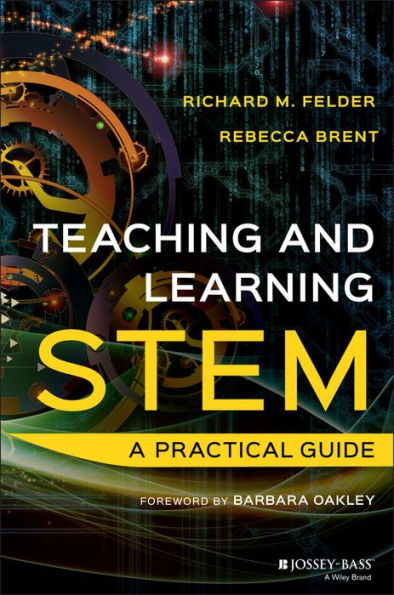Table of Contents
The Authors xi
Tables, Figures, And Exhibits xiii
Foreword xvii
Preface To The First Edition xix
Preface To The Second Edition xxiii
1 Introduction To Teaching 1
1.0 Welcome, There’s Your Desk, Good Luck 1
1.1 Learner-Centered Teaching: Definition, Warning, And Reassurance 3
1.2 What’s In This Book? 5
1.3 How To Use The Book 6
1.4 Good News 7
Part One Planning Courses Interlude. What Do Stem Graduates Need To Know? 11
2 Learning Objectives: A Foundation Of Effective Teaching 15
2.0 Introduction 15
2.1 Writing And Using Learning Objectives 17
2.2 Bloom’s Taxonomy Of Educational Objectives 27
2.3 Ideas To Take Away 32
2.4 Try This In Your Course 32
Interlude. Good Cop/Bad Cop: Embracing Contraries In Teaching 33
3 Planning Courses 35
3.0 Introduction 35
3.1 Three Steps To Disaster, Or, How Not To Approach Course Preparation 36
3.2 A Rational Approach To Course Preparation And Redesign 37
3.3 Intelligent Use Of Artificial Intelligence 42
3.4 Course Policies And Procedures 44
3.5 Writing A Course Syllabus 51
3.6 The Critical First Week 53
3.7 Ideas To Take Away 64
3.8 Try This In Your Course 65
Interlude. Meet Your Brain 67
4 Planning Instruction 73
4.0 Introduction 73
4.1 Avoid Common Planning Errors 73
4.2 What’s In A Class Session Plan? 75
4.3 Promoting Learning 75
4.4 Two Cornerstones Of Effective Class Sessions: Activity And Variety 78
4.5 Plan Good Questions And Activities 79
4.6 Don’t Turn Classes Into Slide Shows And Verbal Avalanches 82
4.7 Use Handouts With Gaps 84
4.8 Planning Laboratory Courses 89
4.9 Ideas To Take Away 92
4.10 Try This In Your Course 93
Interlude. How To Write Class Session Plans (Or Anything Else) 95
Part Two Teaching Courses
5 Elements Of Effective Instruction 101
5.0 Introduction 101
5.1 Making Class Sessions Effective 102
5.2 Make Pre-Class Assignments Effective 105
5.3 Don’t Be A Slave To Your Session Plans 108
5.4 Keep Improving Your Teaching 109
5.5 Ideas To Take Away 113
5.6 Try This In Your Course 114
Interlude. Meet Your Students: Aisha And Rachel 115
6 Active Learning 119
6.0 Introduction 119
6.1 What Is Active Learning And What Happens When You Do It? 120
6.2 Content And Formats Of Activities 122
6.3 How Well Does Active Learning Work? Why Does It Work? 125
6.4 Active Learning For Problem Solving 128
6.5 Avoiding Common Active Learning Mistakes 131
6.6 Common Active Learning Concerns 134
6.7 Ideas To Take Away 138
6.8 Try This In Your Course 139
7 Teaching Online 141
7.0 Introduction 141
7.1 Modes Of Instruction 142
7.2 Necessary Conditions For Successful Online Instruction: Three Interactions, Two Presences, And A Taxonomy 143
7.3 Planning And Delivering An Effective Online Or Hybrid Course 146
7.4 Features And Comparisons Of The Instructional Modes 156
7.5 Flipped Classrooms 157
7.6 Maximizing Accessibility Of Teaching Materials 159
7.7 A Quick Look Back At The Elephant In The Room (Aka Ai) 161
7.8 Ideas To Take Away 161
7.9 Try This In Your Online Or Hybrid Course 162
Interlude. Meet Your Students: Mingyu, Ryan, And Alex 165
8 Assessing Knowledge, Skills, And Understanding 169
8.0 Introduction 169
8.1 Multiple-Choice And Short-Answer Questions 170
8.2 Assessing And Promoting Conceptual Understanding 174
8.3 Assessing Problem-Solving Skills 178
8.4 Grading Written And Oral Reports 190
8.5 Getting By With A Little Help From Technology 199
8.6 Ideas To Take Away 201
8.7 Try This In Your Course 202
Part Three Facilitating Skill Development Interlude. Meet Your Students: Stan And Nathan 205
9 Developing Problem- Solving Expertise 209
9.0 Introduction 209
9.1 The Long, Steep Path From Novice To Expert 210
9.2 Strategies For Developing Problem-Solving Expertise 213
9.3 Inductive Teaching And Learning 222
9.4 Ideas To Take Away 230
9.5 Try This In Your Course 231
Interlude. Meet Your Students: Dave, Megan, And Roberto 233
10 Professional Skills 237
10.0 Introduction 237
10.1 How Can Professional Skills Be Developed? 238
10.2 Communication Skills 240
10.3 Creative Thinking Skills 242
10.4 Critical Thinking Skills 249
10.5 Self-Directed Learning 253
10.6 Creating A Supportive Environment For Professional Skill Development 256
10.7 Ideas To Take Away 258
10.8 Try This In Your Course 259
Interlude. Sermons For Grumpy Campers 261
11 Teamwork Skills 265
11.0 Introduction 265
11.1 Cooperative Learning 266
11.2 How Should Teams Be Formed? 268
11.3 What Can Teams Be Asked To Do? 272
11.4 Turning Student Groups Into High-Performance Teams 275
11.5 Dealing With Difficulties 283
11.6 Ideas To Take Away 287
11.7 Try This In Your Course 288
12 Learner-Centered Teaching Revisited 289
12.0 A Key To Good Teaching 289
12.1 Diversity, Equity, And Inclusion (Dei) 291
12.2 Overview Of Learner-Centered Teaching 298
12.3 Last Words 300
References 301
Index 329







